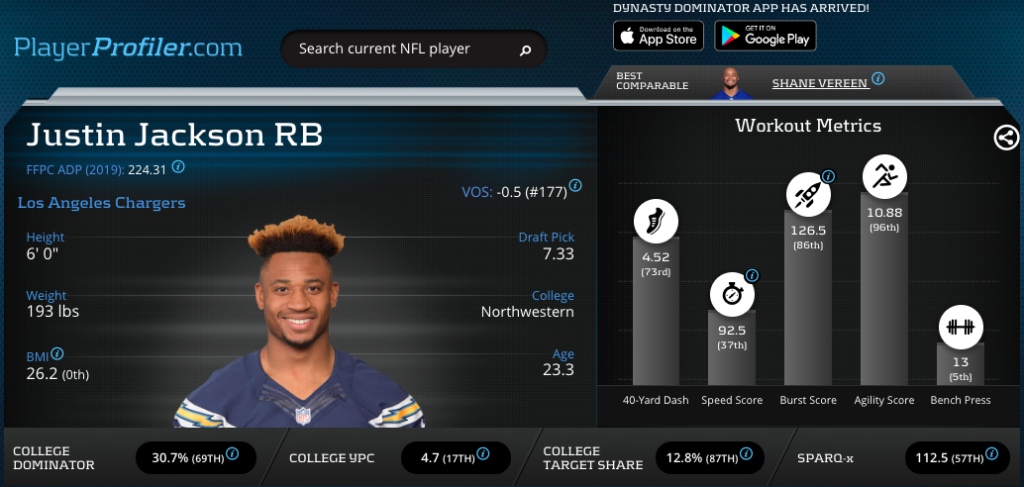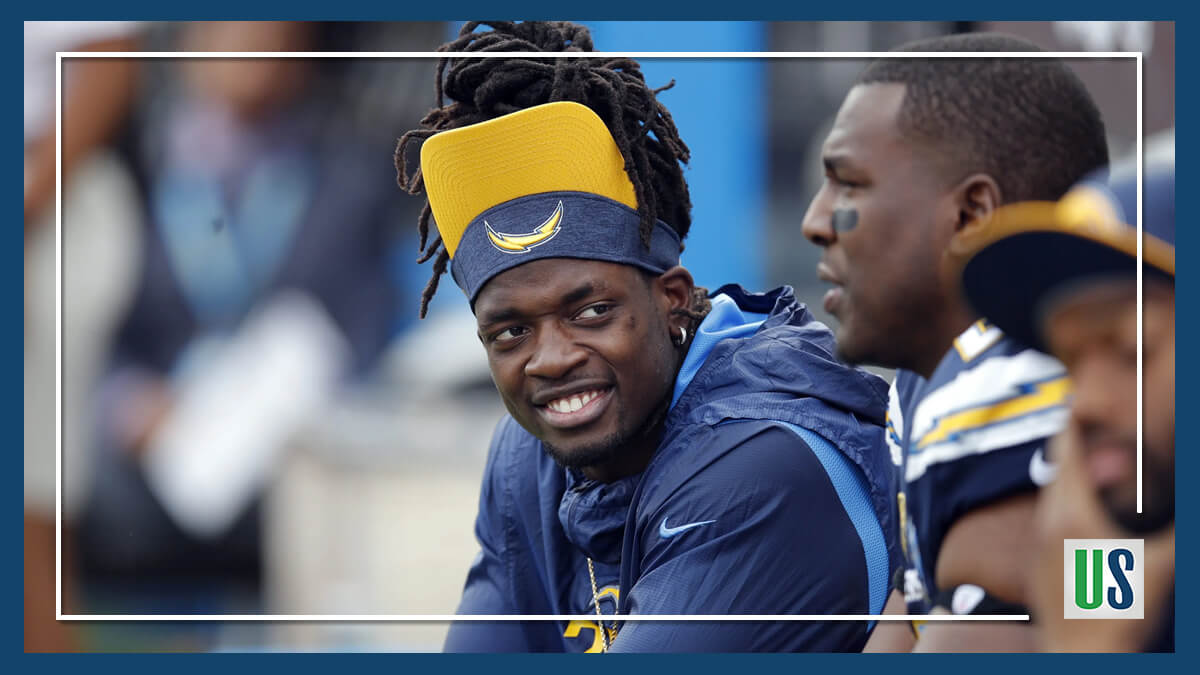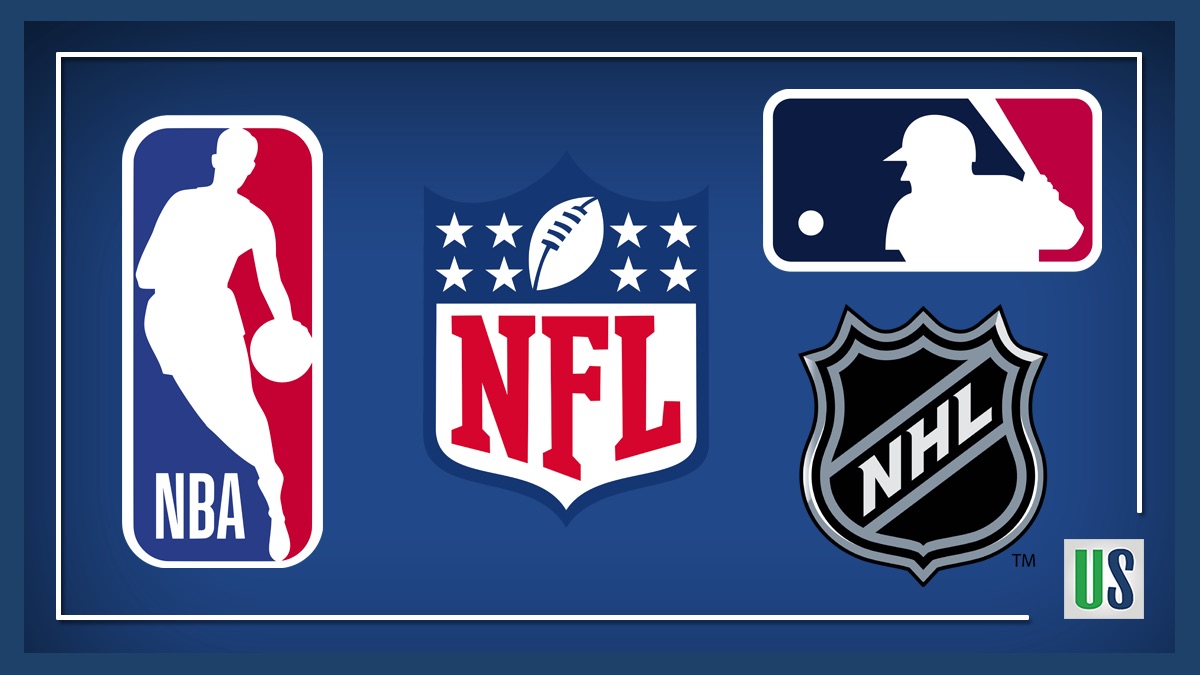Where have you heard this before? The NFL has a star running back sitting out training camp until he gets paid. In fact, two prominent running backs are holding out: Ezekiel Elliott of the Dallas Cowboys and Melvin Gordon of the Los Angeles Chargers. After a close review of situations, it’s clear that in the case of the Melvin Gordon holdout, he has little to no leverage.
Melvin Gordon is a Great NFL Running Back
Before getting to Melvin Gordon’s holdout, let’s talk numbers. Important to note is that Gordon had his best season in 2018, a performance earning him the number 34 spot on the NFL’s annual Top 100 list. In just 12 games, Melvin Gordon rushed for 885 yards, 5.1 yards-per-carry, and 10 touchdowns. Of note, this was his first season with a yards-per-carry above 3.9. In addition, he racked up 50 receptions for 490 yards and 4 more touchdowns.
14 touchdowns are nothing to dismiss, especially considering how the first-round back started his career. After missing the pay-dirt in his rookie season, Gordon amassed 38 touchdowns in his next three seasons. For many (Gordon himself included), it’s difficult to ignore that production.

Efficiency wise, Gordon was also the highest-graded running back against stacked boxes, per PFF. PFF also ranked him 3rd overall for running backs in 2018 and 11th in PFF’s wins above replacement. Additionally, Melvin Gordon posted a staggering number of top efficiency stats on Player Profiler. His plus-34.6 (No.4 ) Production Premium, 34-percent (No. 5) Dominator Rating, 79 (No. 6) Evaded Tackles, 35.1-percent (No. 5) Juke Rate and 2.07 (No. 3) Yards Created Per Carry are elite.
As a player, Gordon has the ability to run inside, outside and is an effective receiver. He was good to great in most areas of production and efficiency in 2018. By most measures of production and efficiency in 2018, Gordon was at the top. It makes sense he would try and renegotiate his contract. He feels elite and wants to be paid as such.
Running Backs are Devalued. Sorry Melvin Gordon Holdout
Unfortunately for Melvin Gordon, he is a running back in the NFL. While running backs are the most important position in fantasy football, they aren’t as valuable to actual football teams. Let’s dissect this (If you would like to continue learning more about running back devaluation and replaceability, read in-depth analysis from PFF, Josh Hermsmeyer, JJ Zachariason, and Ben Baldwin).
Running Backs are Replaceable
Before injury in 2018, Todd Gurley was playing at another level. He had all the production to qualify his elite talent. Gurley was the bell-cow back that everyone loves, rushing for 98 yards and 1.25 rushing touchdowns per game in his first 12 games. Adding to that, Gurley had 3.83 receptions per game for 39.5 yards and 0.33 receiving touchdowns in that span. He was, by all means, an excellent form of offensive production before his injury slowed him down in December.
With that said, C.J. Anderson (a backup running back CUT by the Panthers after Week 9) replaced the injured Gurley and also played on an elite level. Prior to exploding with the Rams, Anderson had just 24 carries for 104 yards and 1 reception in 9 games with the Panthers. In his first three games with the Rams, Anderson rushed for 422 yards and 4 touchdowns.
A similar situation occurred in Kansas City. After Kareem Hunt was cut by the Kansas City Chiefs, Damien Williams produced at a level similar to Hunt. Neither the Rams nor the Chiefs offenses halted. In fact, the Chiefs made it to the AFC Championship and the Rams made it to the Super Bowl.
As PFF’s Steve Palazzolo and Sam Monson point out, running backs are highly dependent on surrounding talent, offensive line, game script and offensive scheme. Unlike throwing in a backup quarterback, throwing a backup running back into a high-octane offense is almost seamless. After all, the Chargers had 4 wins and 0 losses without Melvin Gordon in 2018.
The Chargers have Two Quality Backup Running Backs
Austin Ekeler
Alongside Melvin Gordon, Austin Ekeler was an excellent complementary back. They were quite the one-two punch in 2018. Ekeler, while not as efficient or productive as Gordon, still posted a plus-25.9 (No 8) Production Premium, 4.9 (No. 8) True Yards Per Carry, 6.6 (No. 4) Yards Per Touch and a 9.4-percent (No. 1) Breakaway Run Rate. Ekeler, though he began his career undrafted, made a name for himself in the Chargers backfield. Because of both his talent and the replaceability of running backs, Austin Gayle believes that Ekeler can replace Gordon’s production in the case of a holdout.
Justin Jackson – Razzle Dazzle
Behind Ekeler, the Chargers also have sophomore running back Justin Jackson.

Aside from having a tremendous College Profile, Jackson also has that ‘razzle dazzle’.
“He’s a creative runner,” backfield mate Austin Ekeler said. “He’s a unique runner. There aren’t many people I’ve seen, in general, that run like he does. Like I tell him, he’s got that razzle-dazzle, some hocus-pocus [laughs] — I make up all these different things. That’s how he runs, and that’s how I’d describe his runs because you really don’t know what he’s going to do.”
Austin Ekeler
Running Back Decline, Injury Risk and the Melvin Gordon Holdout
The Age of Decline
According to both Pro Football Reference and Mike Taglier of Fantasy Pros, the average age of running back decline is at 28 years of age. Well, Melvin Gordon is entering his age-26 season. He’s only two years away from If he holds out in 2019, he’s only one year away from the dreaded age-28 season. Why pay up for a running back just before his decline?
Injury Risk
Everyone would agree that football is a vicious sport. After all, the average NFL career only lasts 3.3 years. But, out of every position in football, none is riskier than running back. Running backs have the shortest careers, averaging only 2.57 years in the NFL. Due to the nature of the position and the number of regular collisions, it makes sense. This is another reason why many NFL teams avoid paying large contracts to aging running backs.
Moreover, Melvin Gordon is not a picture of perfect health.

Gordon also accrued 1,079 touches in his four-year career. Because of injury risk and inevitable decline, it’s often easier for teams to just draft another running back than pay the current producer.
Teams Don’t Stop Everything for Running Backs
“I don’t find that happening any time soon. If his own team isn’t going to pay him, I don’t think there are other teams out there who will pay him what he’s looking for,” Quinn said. “I don’t see many teams knocking down the door to offer long-term extensions to running backs anymore.”
Brady Quinn
According to Over the Cap, teams spend just 3.33-percent of their overall cap towards running backs. That doesn’t mean that they spend 3.33-percent for their best running back, but all running backs combined. As noted in the paragraphs above, the running back position is replaceable in production and a constant flow of talent entering the draft. Teams opt to run their back to the ground and then just get another. Or, many teams like the New England Patriots and Philadelphia Eagles deploy a committee of specialist running backs at value.
Another reason that running backs don’t earn as much money is that the running back position is analytically worth less than other positions. Without getting too much into it, passing is simply more efficient and valuable than rushing. That’s why a 5-yard rush is considered good, while a 5-yard pass isn’t. To paraphrase a common analytical stance, the running back position is closer to punter in value than it is to quarterback. Instead of running backs setting up the pass, there’s more evidence that the pass sets up the run. Establishing the run has become more of a trope than a definitive. Because of this, analytics has popularized the phrase “running backs don’t matter.” While this is hyperbole, the statistical impact a running back has on a football field is smaller than many think.
If you want to read about this, read these articles by Josh Hermsmeyer, JJ Zachariason, or Ben Baldwin.
Even Ezekiel Elliott isn’t worth the money according to Josh Hermsmeyer of FiveThirtyEight. And behind Saquon Barkley, Ezekiel Elliott is regarded as the second-best running back in the league. So if Zeke doesn’t deserve it, then Gordon’s value also takes a hit.
Fans, Quarterback and a Franchise Tag
Unfortunately for Melvin Gordon, he doesn’t have the fans and team completely behind him. In a fan poll on Bolts From the Blue, about 70-percent of respondents would rather trade Gordon away, while 8-percent voted to let Gordon sit out without pay. The fans certainly don’t have his back.
Also painful for Gordon is that Philip Rivers came out and said the Chargers would be fine without Gordon. Ouch.
Last, the Chargers hold the best cards in the case of a holdout. Let’s say that the Melvin Gordon holdout leads to him sitting the entire 2019 season. If he does this, he is subject to fines ($40,000 for each day of training camp) and loss of game checks. But worst of all, he doesn’t accrue his fifth-year with the Chargers and he is still under contract for 2020. Essentially, Gordon would just push his 5th-year option forward a year. So he gets another year older without anything changing. Then, if he accrues that fifth season by playing all or part of the 2020 season, the Chargers can just franchise tag him for 2021. They have all the leverage.
Conclusion
Us at the Unafraid Show are all for players getting paid. We’ve written extensively about it. See the articles below.
However, this article is about leverage and Melvin Gordon simply doesn’t have as much leverage as he thinks he does with this holdout. That’s because running backs are in a horrible cycle for sports. Draft them, run them to the ground and then dump them. Teams don’t need to pay up for them. Are there running backs that are more talented than others? Completely. Can an elite running back give a team an edge over other teams in different situations? Of course.
But, with the amount of talent available for drafts, teams can draft a player and own his rights for his five, best years. If running backs want to get paid, they need to change the NFL CBA. Instead of four-year contracts with a fifth-year option, perhaps it would benefit running backs more if they were drafted to two-year contracts with a third-year option. That would allow running backs to earn second contracts before their best years are behind them. So, instead of holding out for pay for himself, Melvin Gordon holdout should be advocating for change for the players yet to enter the draft.




